‘Halloweentown’: The Magic Behind 25 Years of the Disney Channel Original Movie’s Fandom
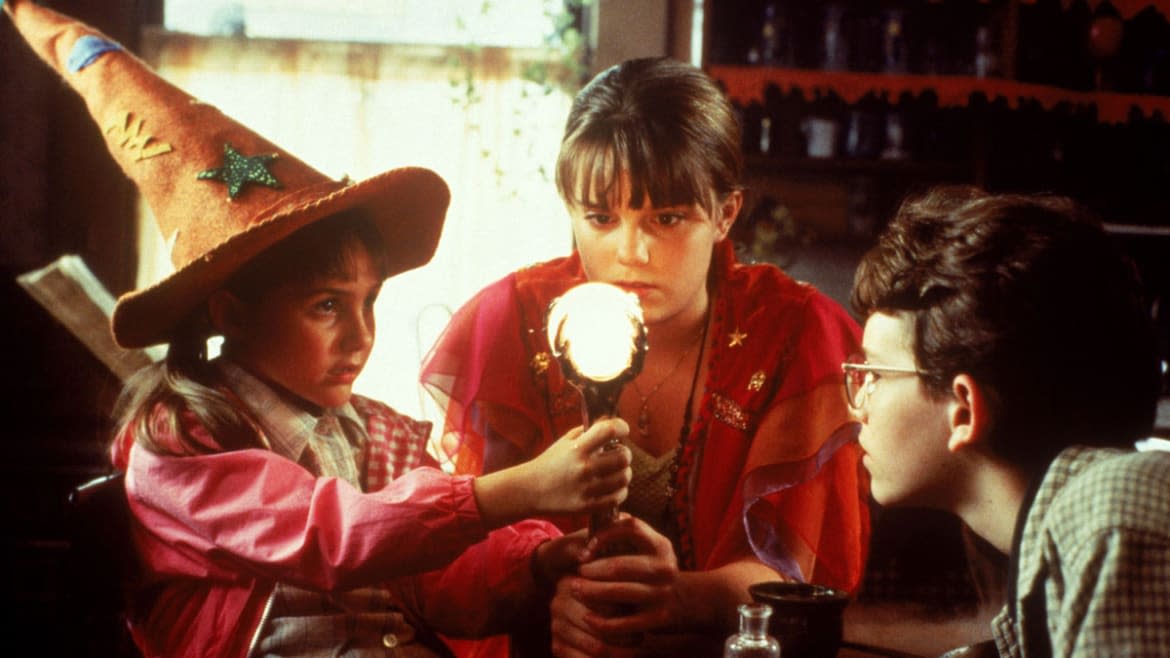
- Oops!Something went wrong.Please try again later.
- Oops!Something went wrong.Please try again later.
- Oops!Something went wrong.Please try again later.
Kimberly J. Brown and Debbie Reynolds took flight on Oct. 17, 1998. The magnificent duo soared over Halloweentown, a home for witches, goblins, werewolves, vampires, and ghosts. The Disney Channel Original Movie brought a new dimension of fall enchantment to kids’ cable as the network’s second Halloween DCOM, after 1997’s Under Wraps.
Executive producer Sheri Singer told E! News in 2017 that NBC bought Halloweentown as part of a six-movie deal. Her producing partner and husband, Steve White, had told her: “I don’t know where to go with this, but my daughter said to me, ‘Dad, where do all the creatures from Halloween go the rest of the year when it’s not October 31?’”
The writer to answer that question was Paul Bernbaum, who penned the first version of Halloweentown for NBC. Siblings Marnie (Brown), Dylan (J. Paul Zimmerman), and Sophie (Emily Roeske) were named after the writer’s children, and Benny the skeleton cab driver (voiced by Rino Romano) was named after his basset hound. Bernbaum designed the original story with a bigger budget and scarier scenes in mind, especially the kids’ entry into Halloweentown. “It was very scary. It was dark. It was almost, like, Wizard of Oz-ish as far as going through, not a yellow brick road, obviously, but just things coming after them and obstacles,” Bernbaum tells The Daily Beast’s Obsessed.
NBC passed on the project, but several years later, Disney Channel bought Halloweentown. Duwayne Dunham, who had edited Star Wars films starring Reynolds’ daughter, Carrie Fisher, directed Halloweentown and many other DCOMs. Writers Jon Cooksey and Ali Marie Matheson revised the script to make it lighter for the channel’s young audience.
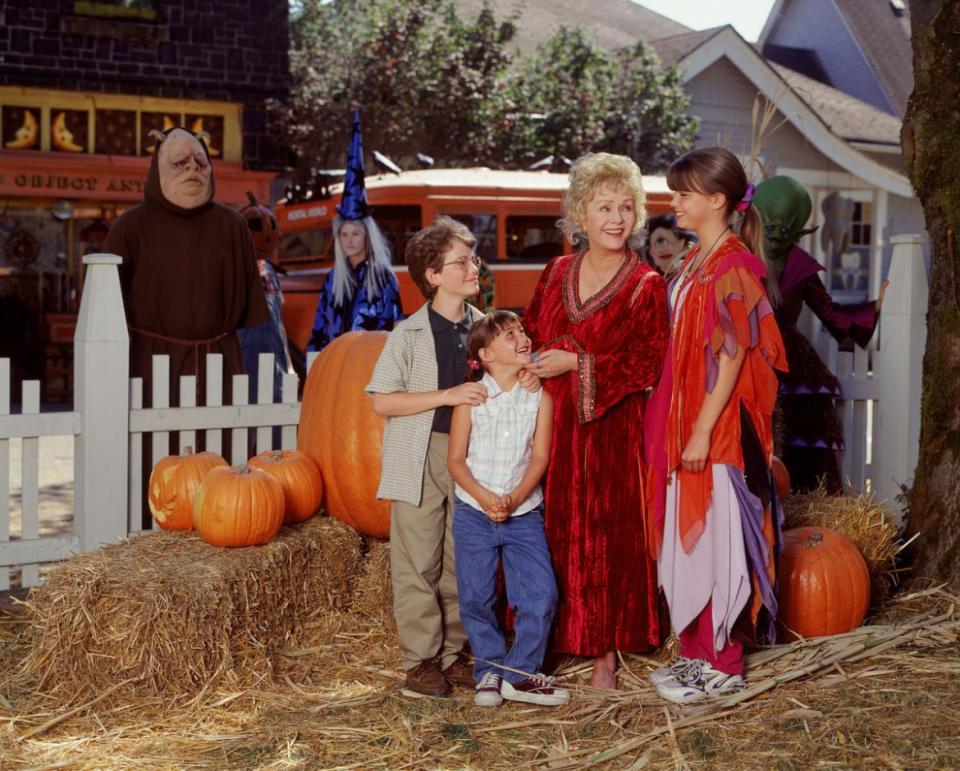
What followed was a phenomenon whose magic met us Halloween after Halloween on Disney Channel. Halloweentown received good reviews and reportedly saw ratings success (It “did a 4.5 homes rating in our universe,” then-Disney Channel President Anne Sweeney told Mediaweek). In the years to come, the film would rightfully gain top-tier DCOM status, making me and many other fans “Halloweentown girls” who look forward to revisiting the franchise annually.
We are comforted by this nostalgic world centered around a giant pumpkin. We’ve made it to adulthood practicing our creativity and individuality, knowing that supportive relationships strengthen us. We’re kind of like Marnie, who has an innate sense of her personality and identity but learns how her powers can combine with others’ to defend goodness against evil. Halloweentown is a classic coming-of-age Disney Channel Original Movie, and its message still inspires us and lifts our spirits decades later.
Creating the world of Halloweentown
The opening sequence of Halloweentown is perfectly spooky: ghostly wails, whistling winds, a candle burning inside a giant jack-o-lantern. Mark Mothersbaugh’s bouncy main theme quickly provides contrast, and the cheerful motif’s minor-key counterpart later introduces Halloweentown.
Dialogue begins with Marnie Piper at home, begging her mom Gwen (Judith Hoag) to let her trick-or-treat. “If you look back on our own childhoods, there's such anticipation associated with trick-or-treating and the big build-up to it,” Dunham tells Obsessed. He prioritized that “energy and excitement” with kids running around in the Pipers’ neighborhood.
The neighborhood becomes even more lively when Aggie Cromwell (Reynolds) arrives with gifts for Marnie, Dylan, and Sophie from her enchanted Mary Poppins bag—a vintage carpet bag, says property master John Pearson-Denning (who worked with the late Alfred Sole, production designer). Gwen has never shared that she and Aggie are witches. The mom resists magic and only wants her kids to live in a human world, like their late father did. Bernbaum says he drew inspiration from Bewitched “as far as the husband not wanting Samantha to use her powers” and with a grandmother wanting her grandchildren to know their magical capabilities.
As Cooksey sees it, “The movies are so much about Gwen, really. Marnie, yeah, she needs to grow up. Yes, she's reaching puberty. Yes, witchcraft is a metaphor… things skip a generation, and sometimes your grandma's your best friend… But Gwen was the one who really, really had to struggle and had made mistakes that she regretted in the past and had to deal with that.”
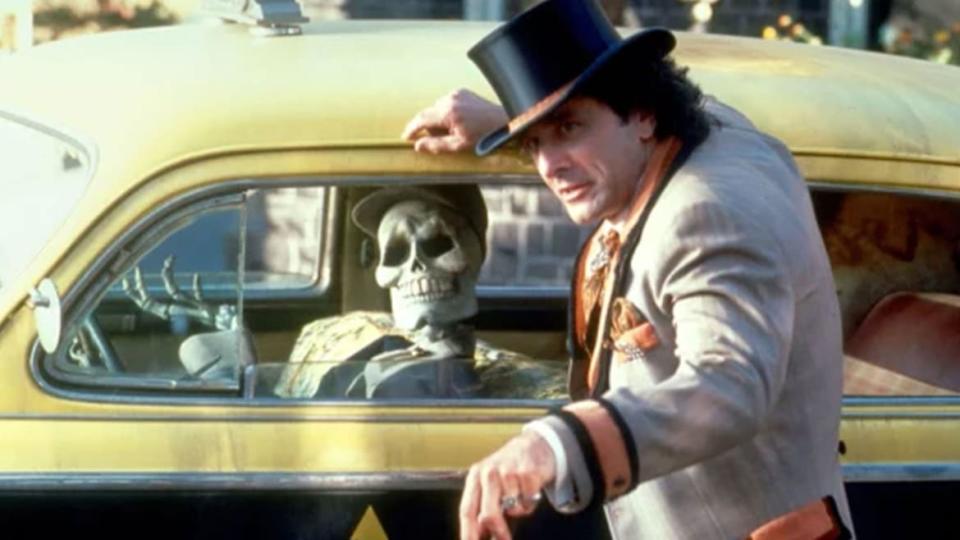
Aggie bends the rules and reads the children a Halloweentown story, foreshadowing the creatures they’ll see later in the film. The picture book was “a collaborative effort,” Pearson-Denning recalls. A well-known artist in Portland named Larry Milam created the drawings. Dunham selected a palette of “orange and yellows and umbers and browns” to fill the glossy pages, which Pearson-Denning’s brother helped complete. Kimberly J. Brown owns one of the volumes that a book-binding artist built. Her character is rendered on the last pages, smiling and flying above Halloweentown on a broom.
Marnie eavesdrops on her mother and grandmother before Aggie goes home, and she learns that her thirteenth Halloween is her last chance to start witch training. Refusing to forfeit her birthright, she sets out for Halloweentown, and her brother Dylan tags along. Mischievous little Sophie secretly follows them aboard a bus to the other realm, where a dark force transforms the good citizens of Halloweentown into hateful beings before they mysteriously vanish.
‘Tiger Town’: The Story of the Long-Lost Disney Channel Original Movie
The first movie was filmed in St. Helens, Oregon, with a town square, a real movie theater, and vacant shops available to Dunham and the crew. “It was our own backlot… The furthest away we went was Aggie’s house, and that was two blocks up the hill,” he recalls.
After the kids surprise Aggie at her home—where she’s trying to mix up witches’ brew to activate Merlin’s Talisman—she shows them the dessert emporium and the broom shop. Pearson-Denning designed the light-up talisman and the brooms. “As soon as I saw it, I had in my head what it would look like, which was a globe, kind of a scepter idea, but truncated and with a kind of a Celtic look and with a claw holding an orb,” he says of the talisman. Marnie’s Windsweeper 5000 was built by an aluminum sculpture artist.
Perky Mayor Kalabar (Robin Thomas) acts like he wants to help Aggie and the kids, but he’s actually angry that Gwen scorned him as a love interest and chose to marry a human. He freezes creatures inside a movie theater, casting spells from a swirling vortex on the screen. When he freezes Gwen and Aggie, the kids persevere in collecting ingredients for homemade witches’ brew. Sophie wisely remembers Aggie’s spell, Marnie bravely installs the talisman in the town’s giant pumpkin, and mom and grandma are revived. After Kalabar reveals himself, the whole family joins hands to defeat the evil warlock with the strength of their magic.
“Marnie is like my daughter. She’s headstrong and she’s very much independent,” Bernbaum shares. Luke (Phillip Van Dyke) is a local goblin who helps Kalabar attempt the hostile takeover, since Luke dislikes his physical appearance and Kalabar can alter it. Bernbaum notes that as “courageous” as Marnie is, some kid viewers could relate more to the self-doubt that Luke’s character addresses. He rejects evil for good and forms an alliance with Marnie. Dylan’s arc is also an important representation of dispelling doubt, as he gradually believes in Halloweentown and embraces his powers. Even Marnie, temporarily weakened by Kalabar at the end of the film, must combat echoes of doubt with belief.
Carrie Fisher and Debbie Reynolds Eulogize Themselves: The ‘Bright Lights’ Love Story
Brown was exactly what the character needed, an actor who “exudes freshness,” says Dunham. “This was somebody that was on the cusp of maybe becoming something. She had no idea what it was and what it meant. And so you wanted that innocence and freshness, and she just had it in aces.” Reynolds, who passed away in 2016, was brilliant opposite Brown and reportedly loved her role as Aggie. Dunham hired a costume designer skilled in theatre to make gowns for Reynolds and Thomas. “She would wrap herself in [the costume] and just become that character immediately. It was really great,” he tells Obsessed. Pearson-Denning remembers the crew paying homage to Reynolds’ earlier work by singing “Tammy” to her.
Magic that's lasted 25 years...and counting
In Halloweentown, one of Debbie Reynolds’ most beloved lines is, “Being normal is vastly overrated.” Jon Cooksey says he connected with Aggie’s message, “Don’t care about what other people think.” He continues, “That’s a great message for a 13-year-old when you're trying to find yourself: ‘Don’t care what your peers think, don't care what the adults think. Just figure out who you are.’” Ali Marie Matheson points out that this can be hard to do at 13, but “there is no normal” in life. “Everybody feels like a weirdo,” Cooksey adds.
As the first writing partners with an overall deal at the Disney Channel, Matheson and Cooksey were the showrunners of the paranormal series So Weird. “[Disney Channel executive] Lee Gaither thought that there was an appetite out there, not only for a teen X-Files show, but for a show that spoke more to the loss, to the grief side and the broken family side of that story,” Cooksey says. Both Fi Phillips of So Weird and Marnie Piper of Halloweentown have lost their fathers. Though their stories differ in tone and in scope, both teens are drawn to otherworldly ideas; they’ve got a “taste in weird stuff,” as Marnie would say.
Matheson and Cooksey also wrote the screenplay for Halloweentown II: Kalabar’s Revenge (2001), where Marnie is introduced to Kalabar’s beguiling son, Kal (Daniel Kountz), and Gwen starts dating again (but her new guy is secretly a golem). “I liked that Marnie was more in charge this time, that Marnie was allowed to kind of run with the story,” Matheson says. Humor in the film is well-timed. She still laughs at the scene where Aggie sorts socks with Gort the junkman (Blu Mankuma).
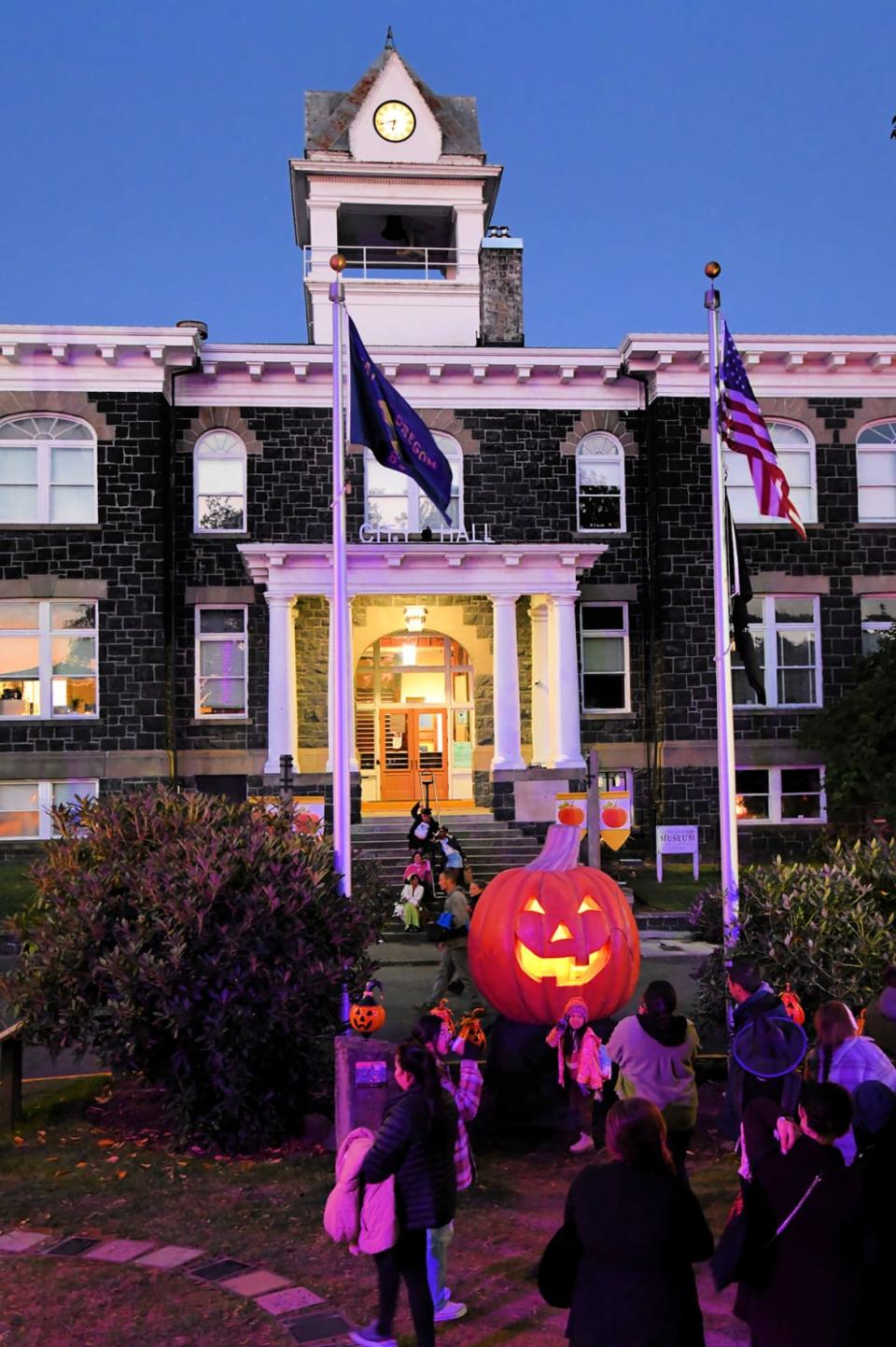
I remember staying home to watch a Halloweentown movie marathon one year in young adulthood, instead of going out. This made-up world and its characters hold the promise of a happy Halloween homecoming for fans of all ages. Life goes on, but we come back to these scenes and all the warmth that accompanies them in our childhood memories.
In early 1999, Mediaweek reported that 43 million homes received Disney Channel, “half of the US households with children” at the time. Anne Sweeney credited Halloweentown as part of the channel’s “movie strategy” and called So Weird their “first prime-time series.” The Hollywood Reporter had only good things to say about Halloweentown. Variety was complimentary of the actors but cautiously optimistic about the film: “What separates this original pic from the usual Halloween fare is that it captures the spirit of a holiday designed for kids. It’s sweet and fun, but too much could definitely give you a stomach ache,” Laura Fries wrote. She commented on how holidays had “been turned into a marketing gimmick, and each year, TV execs try to cash in on the revelry.” And that was in 1998!
Today, viral aesthetics and memes—“Meg Ryan fall,” “Christian girl autumn,” Dark Academia, the Rory Gilmore sweater—cycle through the online discourse and take root in real life, especially fall fashion. On the home decor side, says one trend (inspired by influencer Krystle Perkins’ audio): “In September you’re a fall girl, and then October, a Halloween girl. November, you’re a Christmas girl, with the exception of one day, Thanksgiving, where you become a fall girl again, and then December, you’re a Christmas girl.”
Reflecting on years of watching Halloweentown, I think cable (combined with capitalism) helped millennials develop a palate for more packaged seasonal aesthetics. From 1997 to 2007, Disney Channel released a new Halloween DCOM almost every year. They had a “Wicked Weekend” in 1999, a “Scare-a-thon Marathon” in 2002, and memorable month-long theming, like “Hauntoberfest” and “Wiz-tober,” beginning later in the 2000s. “13 Nights of Halloween” started on Fox Family in 1998 and continues as “31 Nights” today on Freeform. The network still airs “25 Days of Christmas” (though the schedule used to feature new original films and more Rankin-Bass stop-motion specials, but I digress).
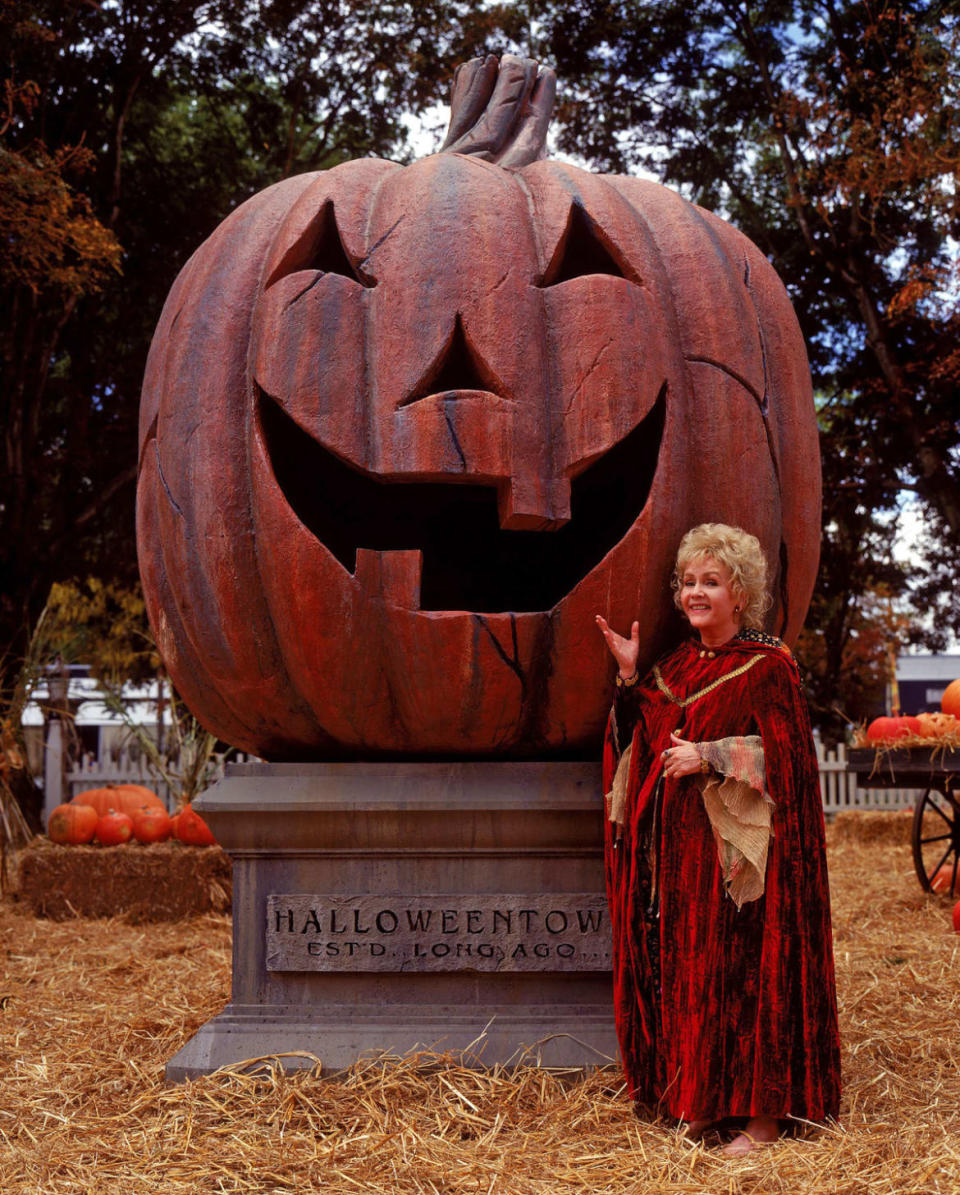
Halloweentown is more than an aesthetic; it’s a tradition that has earned its place of honor among millennials. The franchise represents all the coziness of childhood Halloween, all those bits of nostalgia I’ve stored up. It feels good to celebrate the films and the comfort they bring.
Visually, Halloweentown has taken on a tangible presence in my home. I don’t have cable, but because of aspect ratio issues on Disney+, I ordered a DVD set of the first two movies. I also purchased a beautiful print in which the artist, Julie V, depicts Marnie by the Halloweentown pumpkin amid gleaming golden leaves. It is framed above my photo with Kimberly J. Brown at ’90s Con.
The Best Horror Marathon to Stream for Free this Halloween
A friend recently reminded me how important it is that Halloweentown welcomed our uniqueness as kids. I’d like to think the film is part of our creative DNA and our desire to make the world a kinder, safer, more accepting place. This strong connection is all thanks to the people who brought the film to life 25 years ago.
Discussing what constitutes “good work,” Matheson says it’s made up of “things that you can see at various stages in your life that you might not have been able to see at the original time that you viewed them… that kind of work is really eternal, both in music and writing, art, all of it.” She references the spectacle of Marvel movies to say, “The money is put in toward the spectacle, and spectacle is transitory, whereas relationships with people are eternal.”
Keep obsessing! Sign up for the Daily Beast’s Obsessed newsletter and follow us on Facebook, Twitter, Instagram and TikTok.
Get the Daily Beast's biggest scoops and scandals delivered right to your inbox. Sign up now.
Stay informed and gain unlimited access to the Daily Beast's unmatched reporting. Subscribe now.

